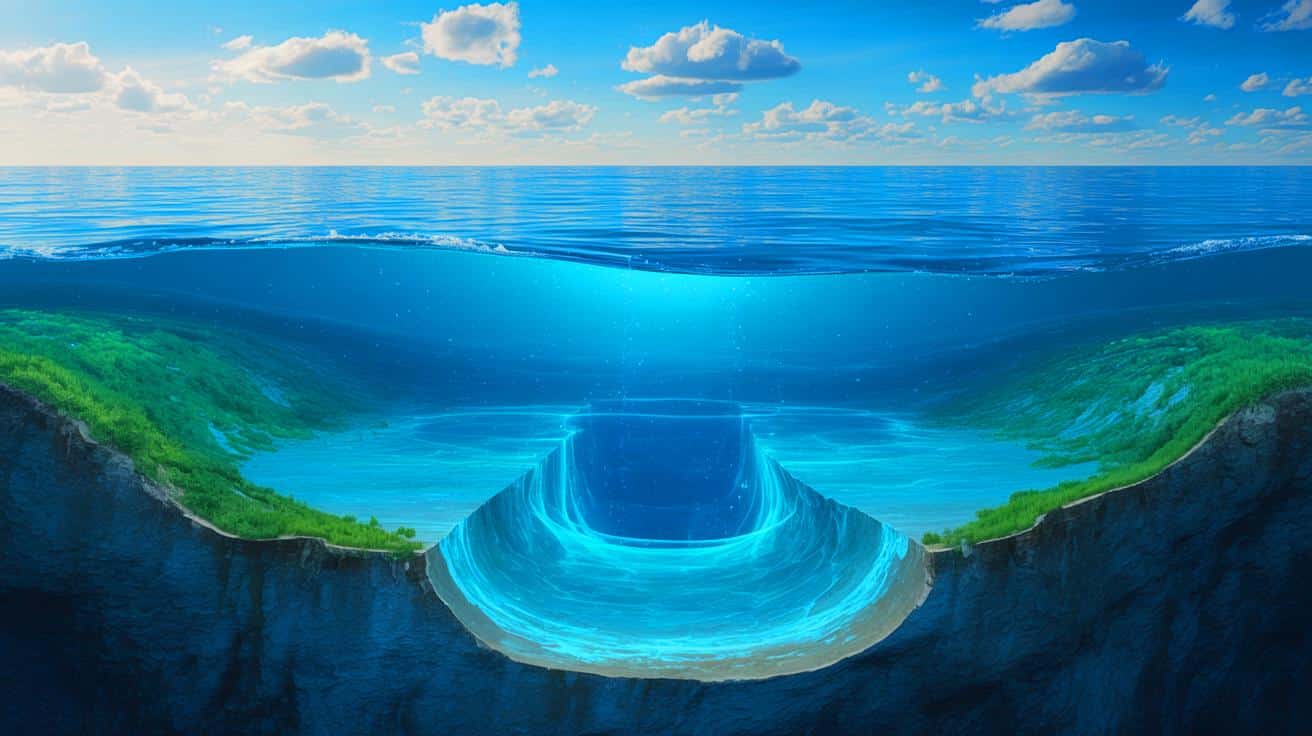IN A NUTSHELL
🌊 Scientists have uncovered a massive low-salinity aquifer beneath the Atlantic Ocean.
🔬 The discovery was made possible through advanced electromagnetic imaging techniques.
🚰 This aquifer could provide a sustainable freshwater source for millions of people.
🌍 The finding prompts new discussions on future water resource management strategies.
In a groundbreaking discovery, scientists have identified a vast reservoir of low-salinity water hidden beneath the Atlantic Ocean, off the coast of the United States. This aquifer presents a remarkable opportunity to address global freshwater scarcity, providing a potentially sustainable source of drinking water for millions. The finding, facilitated by advanced electromagnetic imaging techniques, challenges traditional notions of water resource management and opens new avenues for exploration. As freshwater becomes an ever more precious commodity, this discovery holds promise for future strategies to meet the growing demands of a burgeoning global population.
From Anomaly to Confirmation: Mapping a Hidden World
The journey to uncover the hidden aquifer beneath the Atlantic Ocean began several decades ago. In the 1970s, oil companies drilling off the Atlantic coast encountered nearly fresh water seeping from sediment cores. Initially regarded as a geological oddity, this phenomenon puzzled researchers for years. It was the advent of advanced technology that finally allowed scientists to understand the true scope of this discovery.
Utilizing electromagnetic imaging, researchers from Columbia University’s Lamont-Doherty Earth Observatory and the Woods Hole Oceanographic Institution were able to scan the ocean floor with unprecedented precision. This technique, which measures electrical conductivity, allowed scientists to differentiate between saltwater and freshwater. The results were astounding, revealing a vast structure that stretches approximately 217 miles from Massachusetts to New Jersey. The estimated volume of this low-salinity water reservoir is at least 670 cubic miles, marking a significant advancement in our understanding of underwater resources.
Technological Advancements Unveil the Aquifer
The discovery of the underwater aquifer is a testament to the transformative power of modern technology. Electromagnetic imaging has become an essential tool for exploring the ocean’s hidden depths. By measuring the electrical conductivity of the subsurface, scientists could identify areas rich in freshwater. This innovative technique enabled researchers to map the aquifer with unrivaled accuracy, revealing its vast extent.
This technological breakthrough has not only enhanced our understanding of the ocean but also opened up new possibilities for addressing global challenges. As freshwater scarcity becomes more pressing, the ability to access such underwater reservoirs could revolutionize water management strategies. The potential to tap into these hidden resources presents a promising solution to the growing demand for freshwater, highlighting the critical role that technology will play in securing our planet’s future.
Potential Impact on Global Water Supply
The implications of discovering this massive aquifer extend far beyond scientific curiosity. As the availability of freshwater continues to decline globally, the possibility of accessing vast underwater reservoirs could prove to be a game-changer. This discovery offers hope for developing innovative strategies to manage and distribute water more effectively.
However, the extraction of freshwater from beneath the ocean floor presents several challenges. Environmental concerns, technological limitations, and geopolitical factors must be carefully considered before harnessing this resource. Despite these hurdles, the potential benefits are considerable. The availability of such a vast reservoir could provide a sustainable source of drinking water, easing the burden on existing freshwater supplies and supporting millions of people worldwide.
The Future of Water Resource Management
The unveiling of this hidden aquifer raises important questions about the future of water resource management. With the global population expected to continue growing, the demand for freshwater is set to increase significantly. Traditional sources are already under strain, necessitating the exploration of new solutions.
Developing technologies to access and utilize underwater aquifers could be crucial in addressing future water shortages. However, it is essential to consider the environmental impact of such endeavors. Sustainable use of these resources will require collaboration among scientists, policymakers, and stakeholders worldwide. The discovery of a substantial freshwater reservoir beneath the Atlantic Ocean marks a significant milestone in the quest for sustainable water resources, showcasing the potential for technological innovation to uncover solutions to global challenges.
As scientists continue to explore the vast potential of the newly discovered underwater aquifer, the world faces critical decisions regarding the sustainable management of this resource. How can we balance the urgent need for freshwater with the imperative to protect our planet’s delicate ecosystems and ensure a secure future for generations to come?
This article is based on verified sources and supported by editorial technologies.
Did you like it? 4.5/5 (24)

